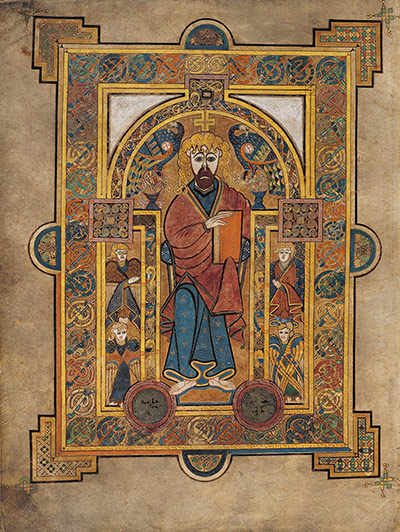
For many in Ireland, the Book of Kells serves as an unofficial symbol of national culture. Dating from c AD800, it symbolizes the power of learning, the impact of Christianity on the life of the country, and the spirit of artistic imagination. Its copy of the four Gospels is distinguished by full pages of rich and vivid ornament. Here we see Christ seated on a low-backed throne, flanked by peacocks, symbols of his resurrection due to the belief that their flesh did not decay
Photograph: The Board of Trinity College Dublin
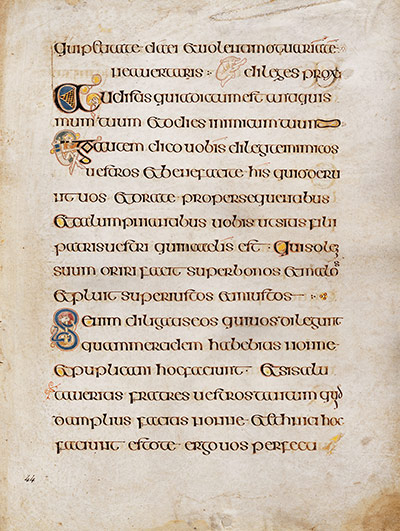
The script used for the text of the Book of Kells has a wonderful balance and weight; taken together with the initial letters to verses, the effect is formal yet greatly varied from one page to the next. There are four main scribes, none of them identified. On many pages, they were careless. Here, at the end of line 15, the last two letters of the word 'quid' may have been added in correcting the text. Human and animal figures placed among the words often comment obliquely on the text. The figure outlined with red dots on line 2 turns his back, appropriately, to the word 'auertaris' (‘turn away’; Matthew 5. 42) and to the injunction not to turn away from him who wishes to borrow
Photograph: The Board of Trinity College Dublin
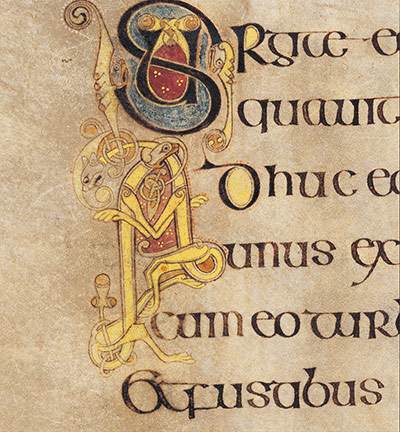
Several narrative scenes from the Gospels are placed – almost concealed to our eyes – within the text. At Matthew’s Gospel chapter 46, Judas’ arrival with a mob to arrest Jesus, and subsequently to betray him with a kiss, is prefaced in the letter 'A' of 'Adhuc'. Lions represent both figures, Judas on the left aggressively biting the more passive figure of Jesus. Such is the profusion of the book’s decoration that it is easy for the eye to pass over a scene like this, which would have been clear to observers at the time
Photograph: The Board of Trinity College Dublin
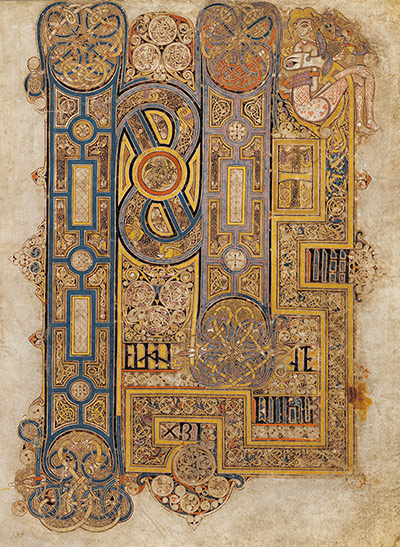
The opening words of each Gospel take up entire pages. The decoration of such pages can be mesmerising, making it difficult for the modern reader to focus clearly on the details. The celebratory opening of Mark’s Gospel, 'Init/ium euange/lii Ihu / Xpi' (‘The beginning of the Gospel of Jesus Christ’), seems a triumph of design over legibility. The snake is prominent throughout the manuscript as a symbol of Jesus’ rebirth and resurrection, due to the shedding of its skin. Here, snakes interlace sinuously at the tops and tails of the first two letters, their heads meeting to form crosses, emblematic of Jesus’ crucifixion
Photograph: The Board of Trinity College Dublin
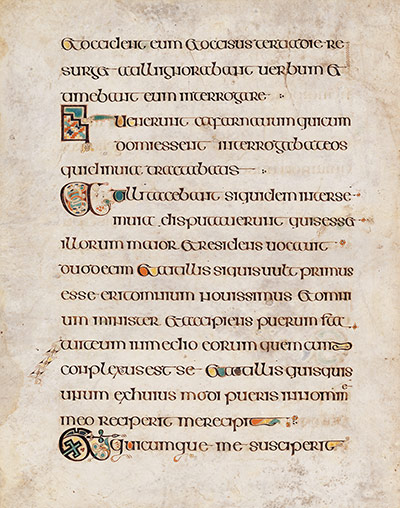
In this section of Mark’s Gospel (9. 30-36), Jesus foretells his death and resurrection; he and the apostles travel to Capharnaum; he cautions them against disputing over which of them should be the greatest. The decoration of the page is deft without overwhelming the viewer. Throughout there are reminders of the nature of Christ and his life: a fish and snake, symbols of resurrection, on the 'Et' at the start of line 4; peacocks within the bowl of the 'A' of 'Ait' (‘he said’) on line 7; and crosses on the final line initial, one of them formed from a snake
Photograph: The Board of Trinity College Dublin
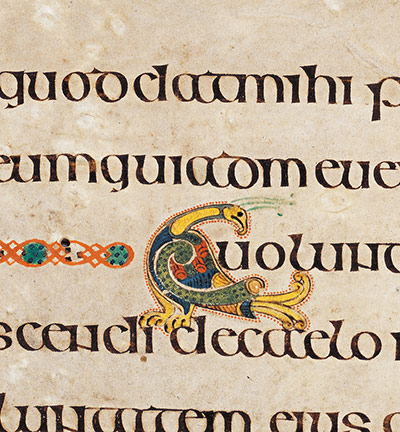
The peacock, a symbol of Christ and his resurrection, was also associated from classical times with the sky and with heaven. Here, the varied symbolism is brought together: a peacock perches on the phrase uttered by Jesus in John’s Gospel 6.38, 'Quia descendi de caelo' (‘Because I came down from heaven’)
Photograph: The Board of Trinity College Dublin







